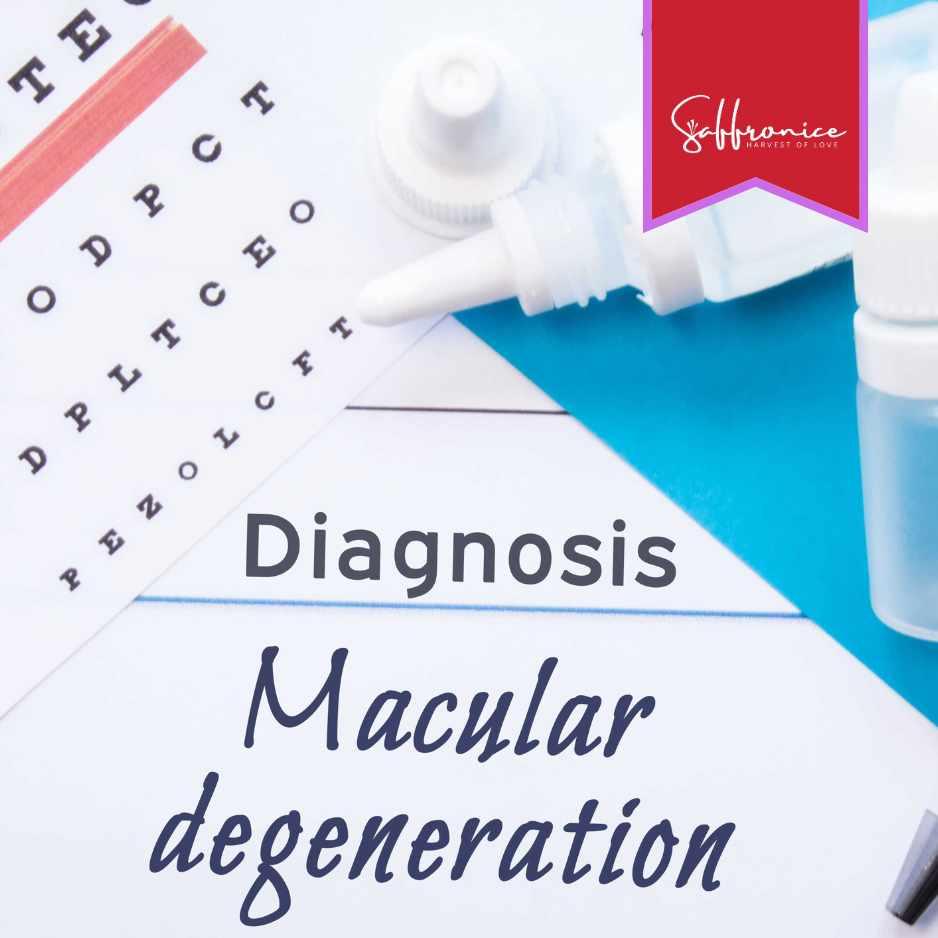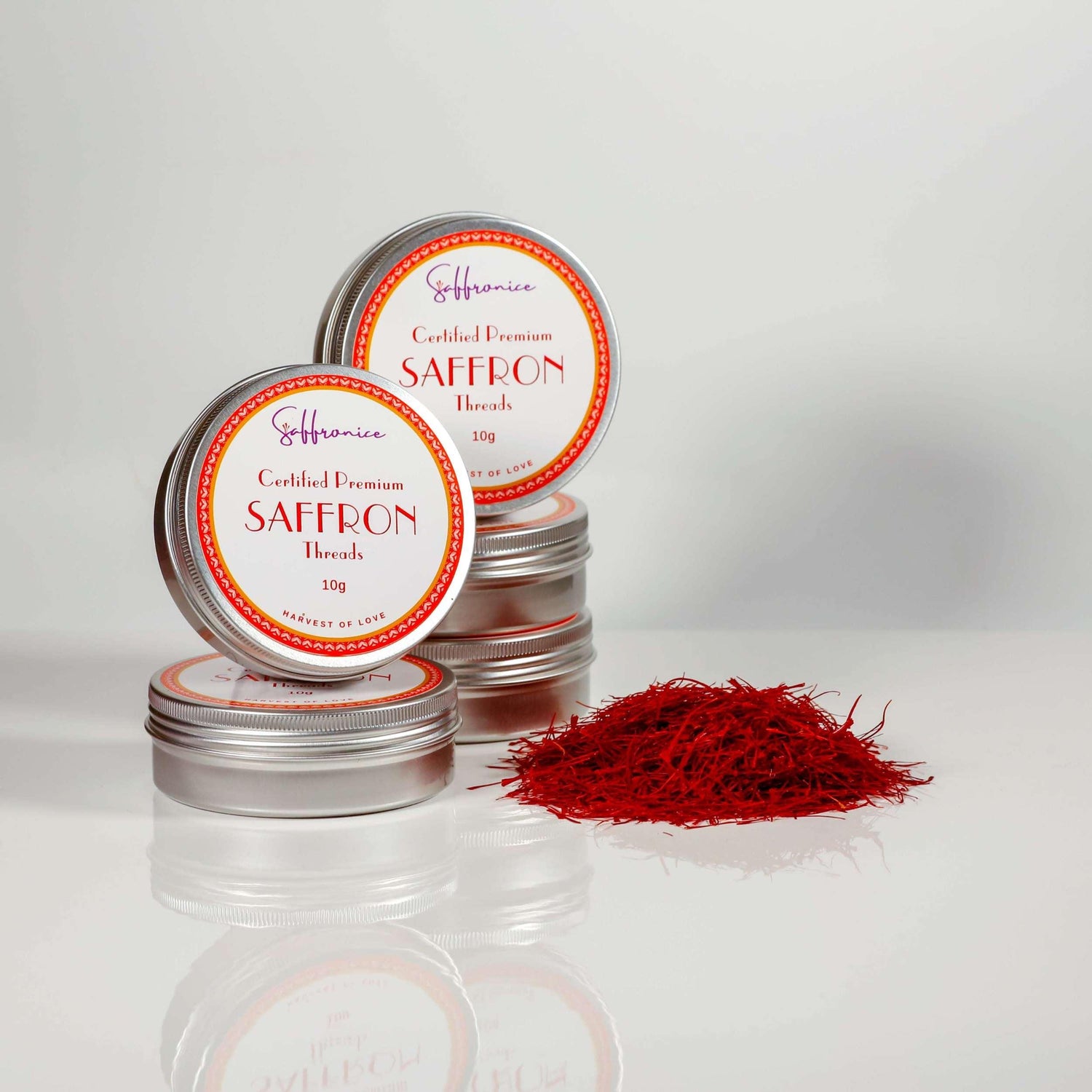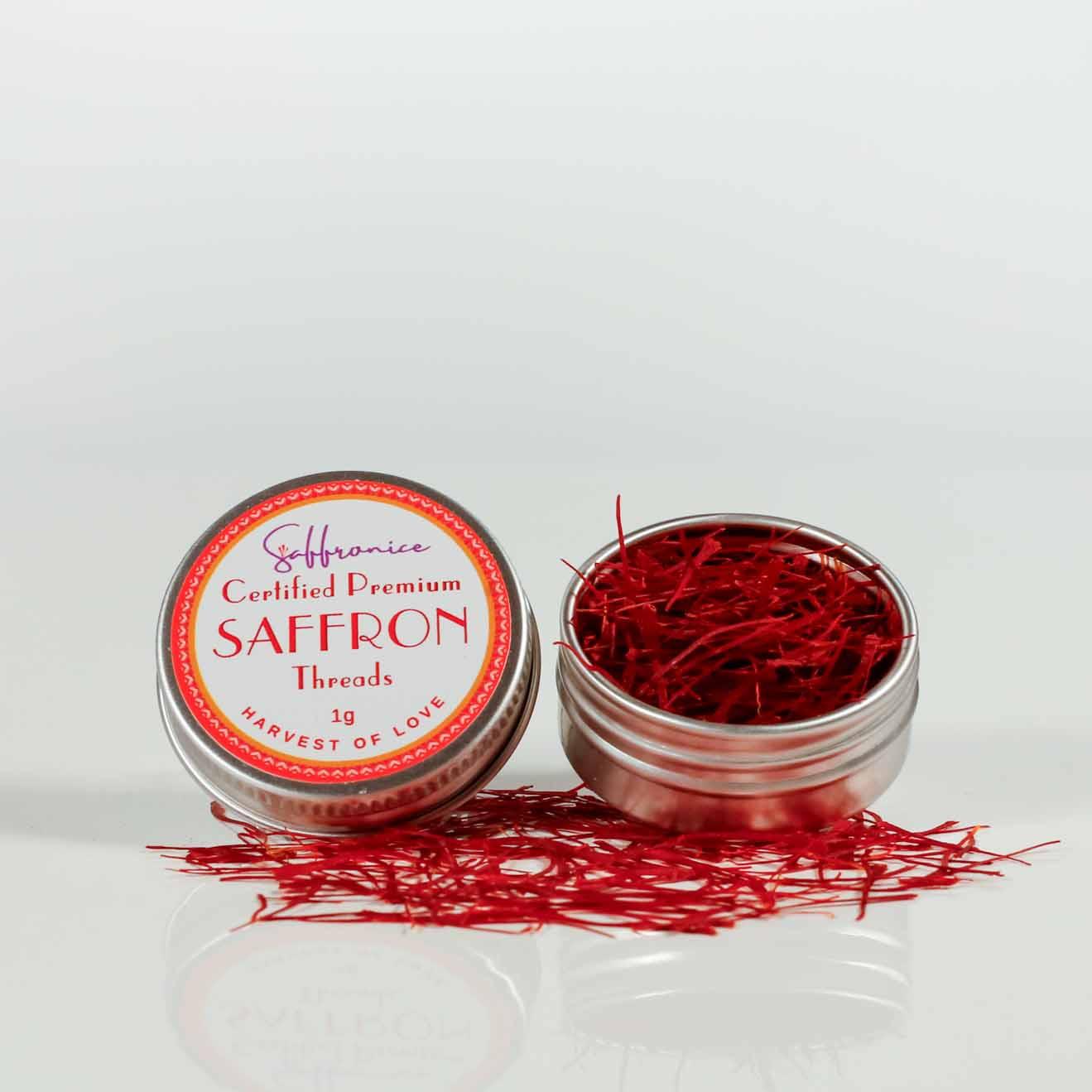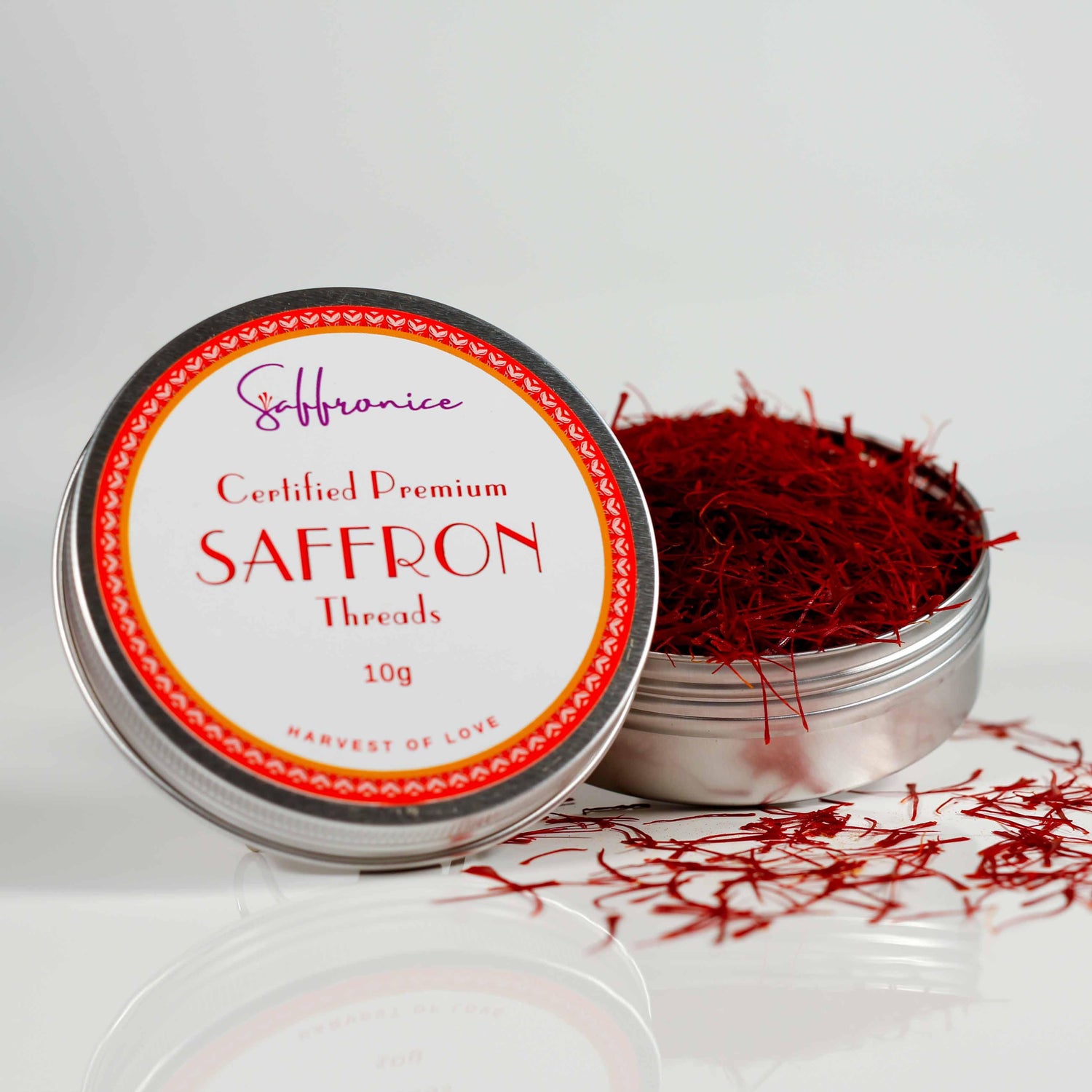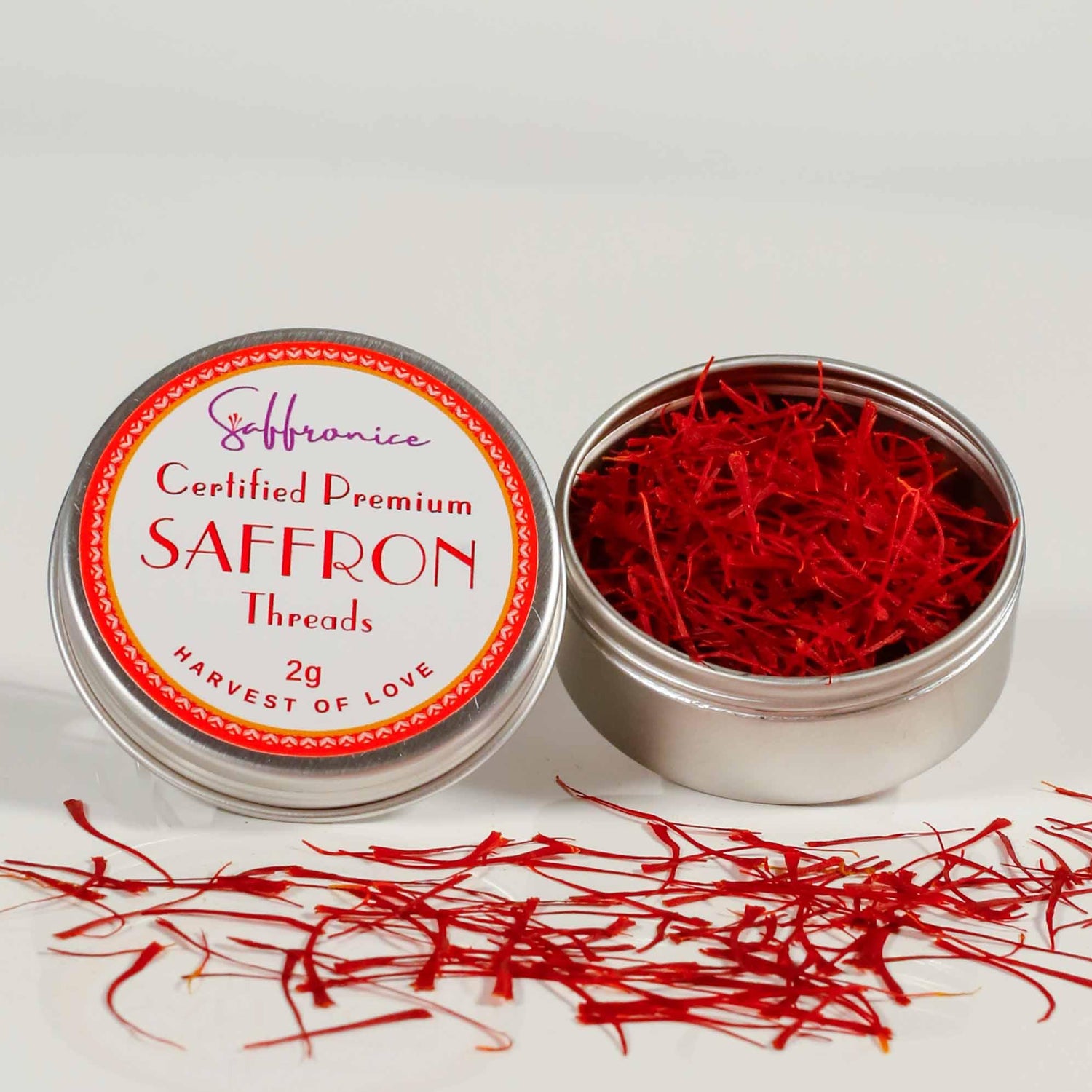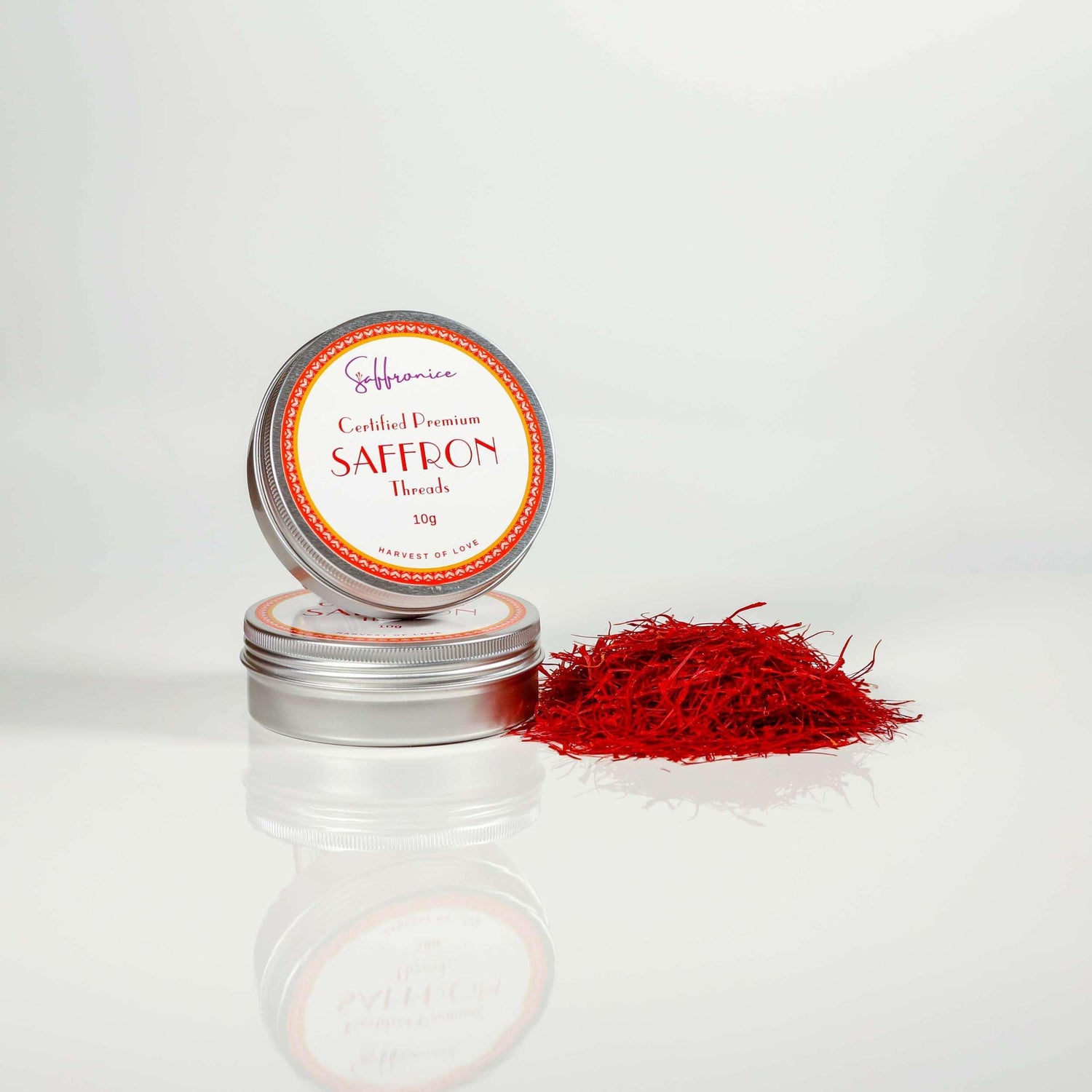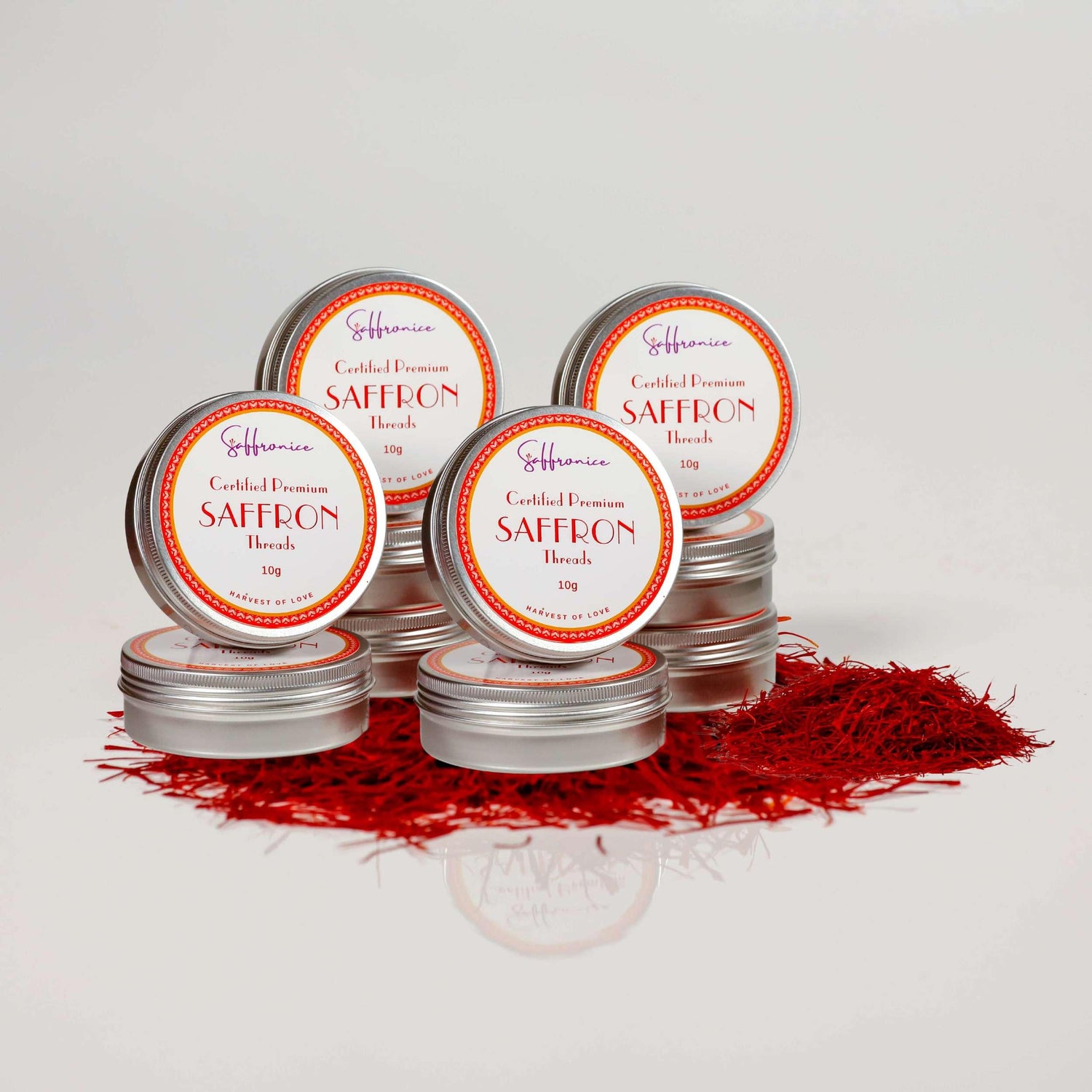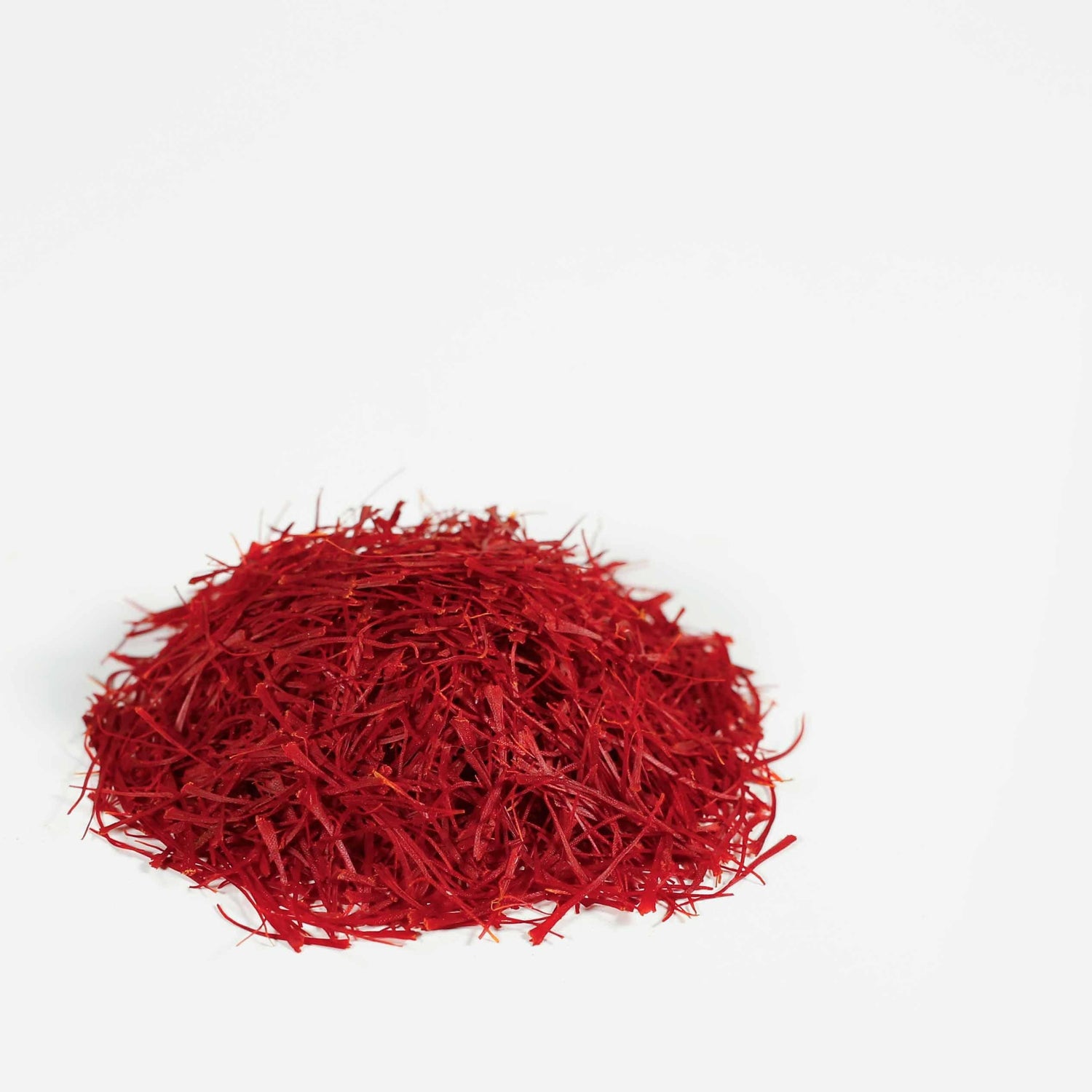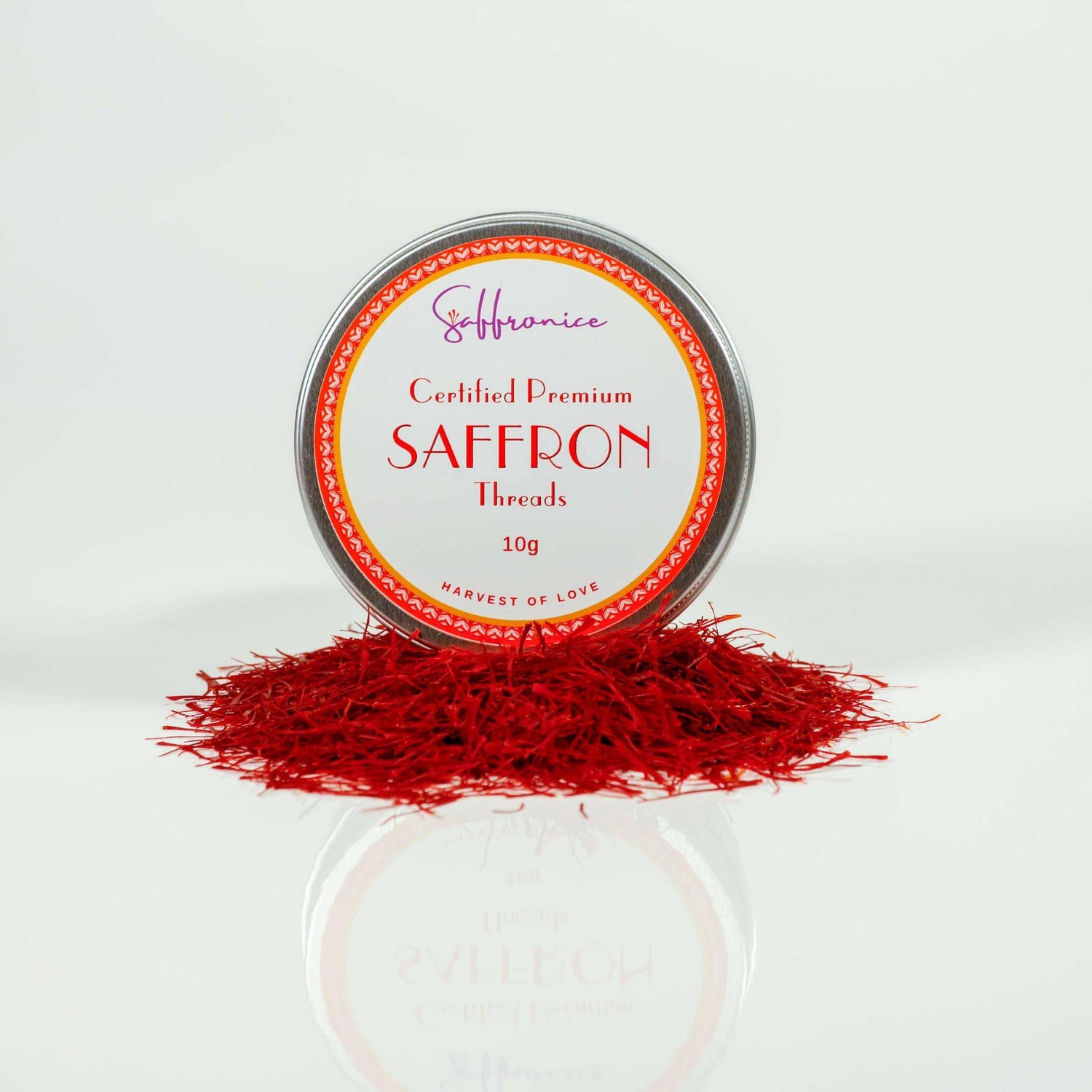Saffron: The New Breakthrough in Macular Degeneration Treatment
Age-related macular degeneration (AMD) is a common cause of vision loss in older adults, affecting millions worldwide. This eye disease specifically targets the macula, which is responsible for sharp, central vision. As AMD progresses, it can make everyday tasks like reading and driving difficult. While there are existing treatments for AMD, they have their limitations, making it essential to explore other potential options.
One such option is saffron—a natural remedy that shows promise in treating macular degeneration. Although saffron is commonly known as a spice used in cooking, recent research has highlighted its potential therapeutic effects. Studies indicate that saffron's antioxidants and anti-inflammatory properties may help slow down the progression of AMD. This paper aims to synthesize current findings on the effects of saffron on macular degeneration and assess its viability as a treatment option.

Understanding Age-Related Macular Degeneration (AMD)
Age-related macular degeneration (AMD) is a progressive eye condition that affects the macula, the central part of the retina responsible for sharp vision. It primarily affects older adults and is a leading cause of vision impairment among this demographic.
Types of AMD:
Dry AMD:
- Characterized by the gradual breakdown of light-sensitive cells in the macula. It is more common but progresses slowly. Symptoms include blurred vision and difficulty recognizing faces.
Wet AMD:
- Involves abnormal blood vessel growth beneath the retina. It progresses rapidly, leading to significant vision loss. Symptoms include dark spots in central vision and straight lines appearing wavy.
Impact on Vision
AMD affects the macula, crucial for tasks requiring detailed vision like reading and driving. Damage to this area results in central vision loss, while peripheral vision usually remains intact.
Role of Drusen Deposits
Drusen are yellow deposits under the retina often found in individuals with AMD. These deposits can be:
- Small Drusen: Generally harmless but may indicate early signs of AMD.
- Large Drusen: Associated with a higher risk of progressing to advanced AMD, both dry and wet forms.
Understanding these aspects helps in recognizing AMD's impact and underscores the importance of early detection and intervention.
Recognising Symptoms and Seeking Diagnosis
Identifying the early signs of age-related macular degeneration (AMD) is crucial for managing the disease effectively. Common symptoms include:
- Blurry or fuzzy vision: Objects may appear out of focus.
- Dark or empty areas in the centre of vision: These spots can grow over time, making it challenging to read or recognize faces.
- Distorted vision: Straight lines may appear wavy or bent, a symptom particularly noticeable when looking at grids or patterns.
- Difficulty adapting to low light levels: Trouble seeing in dimly lit environments.
Regular eye examinations are vital. An eye doctor can detect AMD before significant vision loss occurs. Early diagnosis allows for more treatment options and better management of the condition.
Diagnostic Methods
- Comprehensive Eye Exam: Includes visual acuity tests and dilated eye exams to inspect the retina and macula.
- Amsler Grid Test: A simple self-monitoring tool where patients look at a grid pattern to detect any distortions or missing areas in their vision.
- Optical Coherence Tomography (OCT): Provides detailed images of the retina, revealing any abnormalities or fluid accumulation.
- Fluorescein Angiography: Involves injecting a dye into the bloodstream to highlight blood vessels in the retina, aiding in identifying abnormal growths.
Early detection through these diagnostic techniques can significantly improve outcomes, emphasizing the importance of regular check-ups with an eye doctor.

Mechanisms of AMD and Saffron's Therapeutic Action
Pathogenesis of AMD AMD develops due to a complex interplay of genetic, environmental, and lifestyle factors. The primary mechanisms involved in AMD include:
- Oxidative Stress: The retina is highly susceptible to oxidative damage due to its high metabolic rate and exposure to light. Reactive oxygen species (ROS) can damage retinal cells, leading to AMD progression.
- Inflammation: Chronic inflammation in the retina contributes to AMD development. Inflammatory cytokines and immune responses can damage retinal cells and exacerbate disease progression.
- Abnormal Blood Vessel Growth: In wet AMD, abnormal blood vessels grow beneath the retina, leading to leakage, bleeding, and scarring, which severely impairs vision.
- Accumulation of Drusen: Drusen are deposits of extracellular material that accumulate between the retina and the underlying tissue. Large drusen are associated with an increased risk of progressing to advanced AMD.
Saffron's Mechanism of Action
Saffron's therapeutic potential in AMD is attributed to its bioactive compounds, primarily crocin, crocetin, and safranal. These compounds exhibit several beneficial mechanisms:
- Antioxidant Properties: Saffron's bioactive compounds scavenge ROS and enhance the activity of antioxidant enzymes. This reduces oxidative damage in retinal cells, mitigating one of the primary factors in AMD progression (Sepahi, Razavi, & Hosseinzadeh, 2018).
- Anti-inflammatory Effects: Saffron inhibits the expression of inflammatory cytokines and reduces the activation of inflammatory pathways in retinal cells. By curbing inflammation, saffron can potentially slow down the progression of AMD (Sepahi, Razavi, & Hosseinzadeh, 2018).
- Neuroprotective Effects: Saffron protects photoreceptor cells from apoptosis (programmed cell death) induced by various stressors. This preservation of retinal cells helps maintain retinal function and structure (Sepahi, Razavi, & Hosseinzadeh, 2018).
- Inhibition of Abnormal Blood Vessel Growth: Saffron's anti-angiogenic properties help prevent the formation of abnormal blood vessels in wet AMD, reducing the risk of leakage and bleeding.

Treatment Approaches
Conventional Treatment Approaches for Wet AMD
Managing wet AMD effectively often relies on targeted medical interventions. Key treatment strategies include:
Anti-VEGF Injections
Anti-VEGF (vascular endothelial growth factor) injections are a cornerstone in treating wet AMD. These injections work by inhibiting the growth of abnormal blood vessels under the retina, which is a hallmark of wet AMD. Commonly used anti-VEGF drugs include:
- Ranibizumab (Lucentis)
- Aflibercept (Eylea)
- Bevacizumab (Avastin)
These medications help to preserve vision and, in many cases, improve it. Administered directly into the eye, anti-VEGF injections are typically given monthly or bi-monthly.
Laser Surgery Techniques
Laser surgery offers another approach to managing wet AMD, primarily focusing on sealing leaky blood vessels. Two main types of laser treatments are used:
- Photodynamic Therapy (PDT): Involves injecting a light-sensitive drug into the bloodstream, which accumulates in the abnormal blood vessels. A laser then activates the drug to seal these vessels.
- Thermal Laser Photocoagulation: A high-energy laser is used to directly seal leaky blood vessels. While effective, this technique is less commonly used today due to the risks of damaging surrounding healthy tissue.
Both anti-VEGF injections and laser surgery play crucial roles in preventing further vision loss and maintaining the quality of life for individuals with wet AMD.

Exploring Saffron as a Proven Breakthrough Treatment for Macular Degeneration
Medicinal History of Saffron and Health Benefits
Saffron, derived from the Crocus sativus flower, has a storied history in traditional medicine. Known for its vibrant colour and distinct flavour, saffron has been used for centuries to treat various ailments. Its health benefits extend beyond culinary uses, offering potential therapeutic effects such as:
- Antioxidative properties
- Anti-inflammatory mechanisms
- Neuroprotective qualities
Scientific Studies on Saffron's Therapeutic Potential Recent research has turned its focus toward saffron’s role in treating Age-related Macular Degeneration (AMD). Studies suggest that saffron may mitigate the effects of AMD due to its rich composition of crocin and crocetin—natural compounds known for their potent antioxidative and anti-inflammatory properties.
Key Findings:
- Reduction of Oxidative Stress: Saffron supplements have shown promise in decreasing oxidative stress, a significant factor in the progression of AMD. This reduces cellular damage within the retina.
- Anti-inflammatory Effects: Inflammation plays a critical role in AMD's advancement. Saffron's anti-inflammatory properties help in curbing this process, thereby potentially slowing disease progression.
Example Studies:
- Clinical Trials: Various clinical trials have documented improvements in visual function among AMD patients who regularly consumed saffron supplements. Falsini et al. (2010) demonstrated that saffron supplementation significantly improved retinal flicker sensitivity in early AMD patients.
- Preclinical Research: Animal models have demonstrated that saffron can protect retinal cells from damage caused by oxidative stress and inflammation.
By incorporating these findings into broader treatment strategies, saffron emerges as a promising natural remedy for those battling macular degeneration.

Current Research Status and Future Implications
Clinical Trials on Saffron's Efficacy
Several clinical trials are currently being conducted to study the effectiveness of saffron in treating AMD. Researchers are specifically interested in how saffron's antioxidative and anti-inflammatory properties can slow down or reverse the progression of this condition. The main goal of these trials is to establish a clear connection between saffron supplementation and improvements in visual acuity and retinal health.
Preclinical Research Landscape
Preclinical studies have provided promising findings regarding saffron's potential as a treatment for AMD. These studies involve laboratory experiments and animal models, which help researchers understand how saffron works at a cellular level and its effects on the retina.
Laboratory Experiments
In laboratory experiments, saffron has shown the ability to protect retinal cells from oxidative stress, which is a major factor in the development of macular degeneration. This suggests that saffron's antioxidative properties could be beneficial in preventing or slowing down the damage caused by AMD (Sepahi, Razavi, & Hosseinzadeh, 2018).
Animal Models
Animal models have also yielded positive results. When animals with induced macular degeneration were treated with saffron extracts, there were significant improvements in their retinal function (Broadhead, Chang, Grigg, & McCluskey, 2019). This further supports the potential effectiveness of saffron as a treatment option for AMD.

Challenges and Future Research Focus
While the current research on saffron for AMD is promising, there are still some challenges and areas that require further investigation:
- Variability in Quality and Dosage: Different studies have used varying qualities of saffron and dosages, making it difficult to establish consistent treatment protocols. Standardizing these factors will be important for future research.
- Limited Long-term Safety Data: There isn't enough information available about the long-term safety of saffron use for AMD. More extensive studies are needed to better understand any potential risks or side effects.
- Moving from Alternative Medicine to Mainstream: For saffron to be widely accepted as a treatment option for AMD, it needs to undergo large-scale clinical trials that can validate the initial findings from preclinical studies.
- Potential Interactions with Other Drugs: It's important to investigate whether saffron may interact with any other medications commonly used by AMD patients. This will help ensure its safety and effectiveness when used in combination therapies.
Addressing these challenges and focusing on these areas of research will be crucial in determining the true potential of saffron as a therapeutic option for AMD.
Safe Utilisation of Saffron for Macular Health
To safely incorporate saffron into your macular degeneration management plan, it's important to know the different forms available and how to use them correctly. Here are the common forms:
- Standardised Extracts: Concentrated forms of saffron, often available as supplements.
- Saffron Eye Drops: A newer form being explored for direct application to the eyes.
Before starting any saffron supplementation, it is crucial to consult healthcare professionals. They can provide proper dosage guidance to help you avoid potential side effects and interactions with other medications. While typical dosages in studies range from 20-30 mg per day, it's important to remember that individual needs may vary.
In addition to dosage, there are other safety considerations when using saffron:
- Allergies: Check if you have any known allergies to saffron or related plants such as ragweed, marigolds, or daisies.
- Pre-existing Conditions: If you have any underlying health conditions or take medications regularly, it's important to discuss with your doctor whether saffron is safe for you. Certain conditions or medications may interact negatively with saffron.
By seeking medical guidance, you can ensure a personalized approach that optimizes both safety and effectiveness in using saffron for macular health.

Complementary Approaches for AMD Prevention
Making certain lifestyle changes can help reduce the risk and slow down the progression of age-related macular degeneration (AMD). Here are some important areas to focus on:
Balanced Diet
Eating a healthy diet that includes specific nutrients can support the health of your macula. Here are some foods to include:
- Leafy Greens: Spinach, kale, and collard greens are rich in lutein and zeaxanthin, antioxidants that protect the macula.
- Fish: Salmon, sardines, and mackerel are high in omega-3 fatty acids, linked to a lower risk of AMD.
- Fruits and Vegetables: Berries, oranges, and bell peppers are packed with vitamins C and E, beneficial for eye health.
Regular Physical Activity
Being physically active is good for overall health and eye health. It can improve blood circulation, including to the eyes. Aim for:
- Cardiovascular Exercises: Activities like walking, jogging, or cycling can improve blood flow throughout your body, including to your eyes.
- Strength Training: Lifting weights or doing resistance exercises can help build muscle strength, which is important for maintaining good posture and overall metabolic health.
Additional Healthy Habits
- Avoid Smoking: Smoking is a major risk factor for AMD. Quitting smoking is one of the best things you can do for your eye health.
- Manage Weight: Obesity has been associated with an increased risk of AMD. Maintaining a healthy weight through a balanced diet and regular exercise can help lower this risk.
- Protect Eyes from UV Light: Prolonged exposure to ultraviolet (UV) light from the sun can damage your eyes. Wearing sunglasses that block 100% of UV rays whenever you're outdoors can help protect your eyes.
These lifestyle changes, when combined, create a solid foundation for preventing AMD or slowing down its progression.
Conclusion
Exploring saffron as a potential treatment opens new avenues for individuals living with macular degeneration. This natural remedy offers hope, backed by scientific research that underscores its antioxidative and anti-inflammatory properties.
Potential of Saffron
Saffron's unique compounds, such as crocin and safranal, have shown promise in protecting retinal cells and improving visual function in AMD patients. These findings inspire optimism among those seeking alternative treatments.
Support for Research
Encouraging continued exploration and support for ongoing clinical trials is crucial. Understanding saffron's full benefits could pave the way for it to become a mainstream therapeutic option for macular degeneration.
With dedicated research efforts, the future holds the potential for harnessing saffron's full capabilities. This could significantly improve the quality of life for those affected by this challenging eye condition.
References
Broadhead, G. K., Chang, A., Grigg, J. R., & McCluskey, P. (2019). Saffron therapy for the treatment of mild/moderate age-related macular degeneration: A randomized clinical trial. Graefe's Archive for Clinical and Experimental Ophthalmology, 257(1), 31-40.
Falsini, B., Piccardi, M., Minnella, A., Savastano, M. C., Capoluongo, E., Fadda, A., ... & Maccarone, R. (2010). Influence of saffron supplementation on retinal flicker sensitivity in early age-related macular degeneration. Investigative Ophthalmology & Visual Science, 51(12), 6118-6124.
Sepahi, S., Razavi, B. M., & Hosseinzadeh, H. (2018). Saffron (Crocus sativus) in the treatment of age-related macular degeneration: A mini-review. Journal of Nutrition and Intermediary Metabolism, 13, 40-44.
Learn more about the health benefits of Saffron and the latest research.


